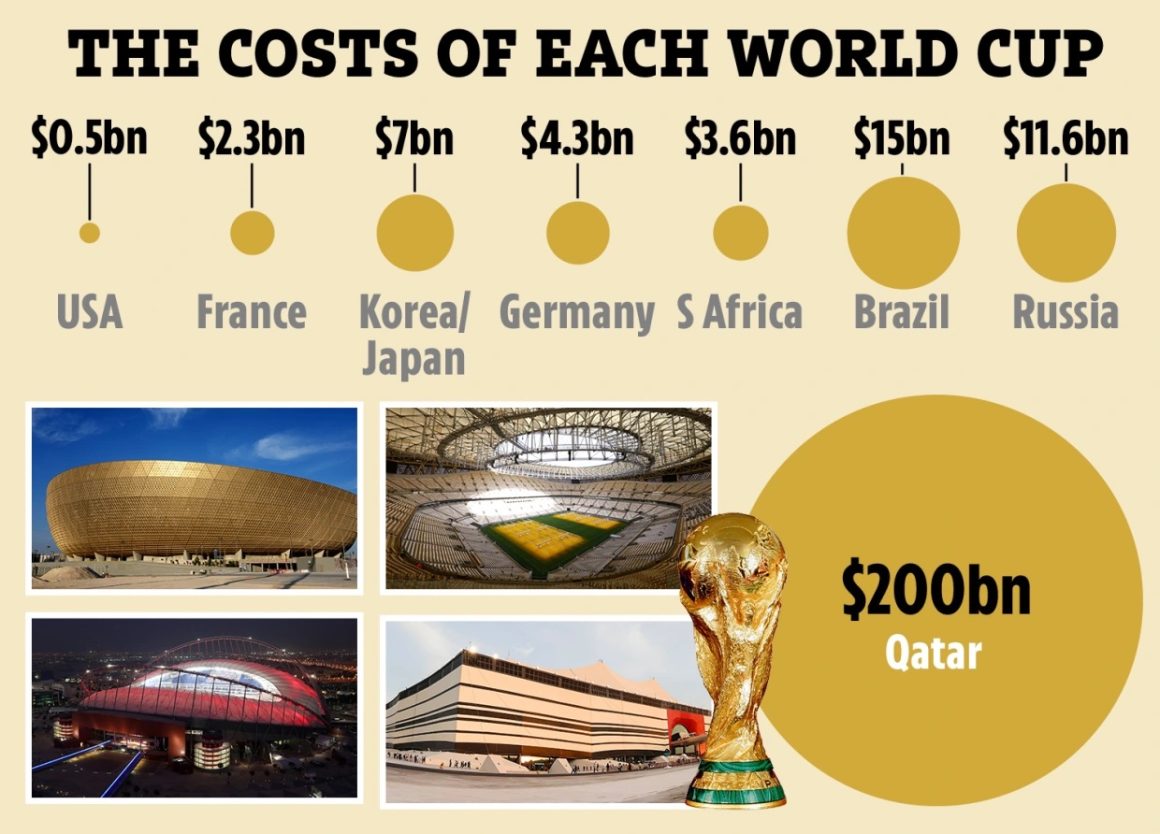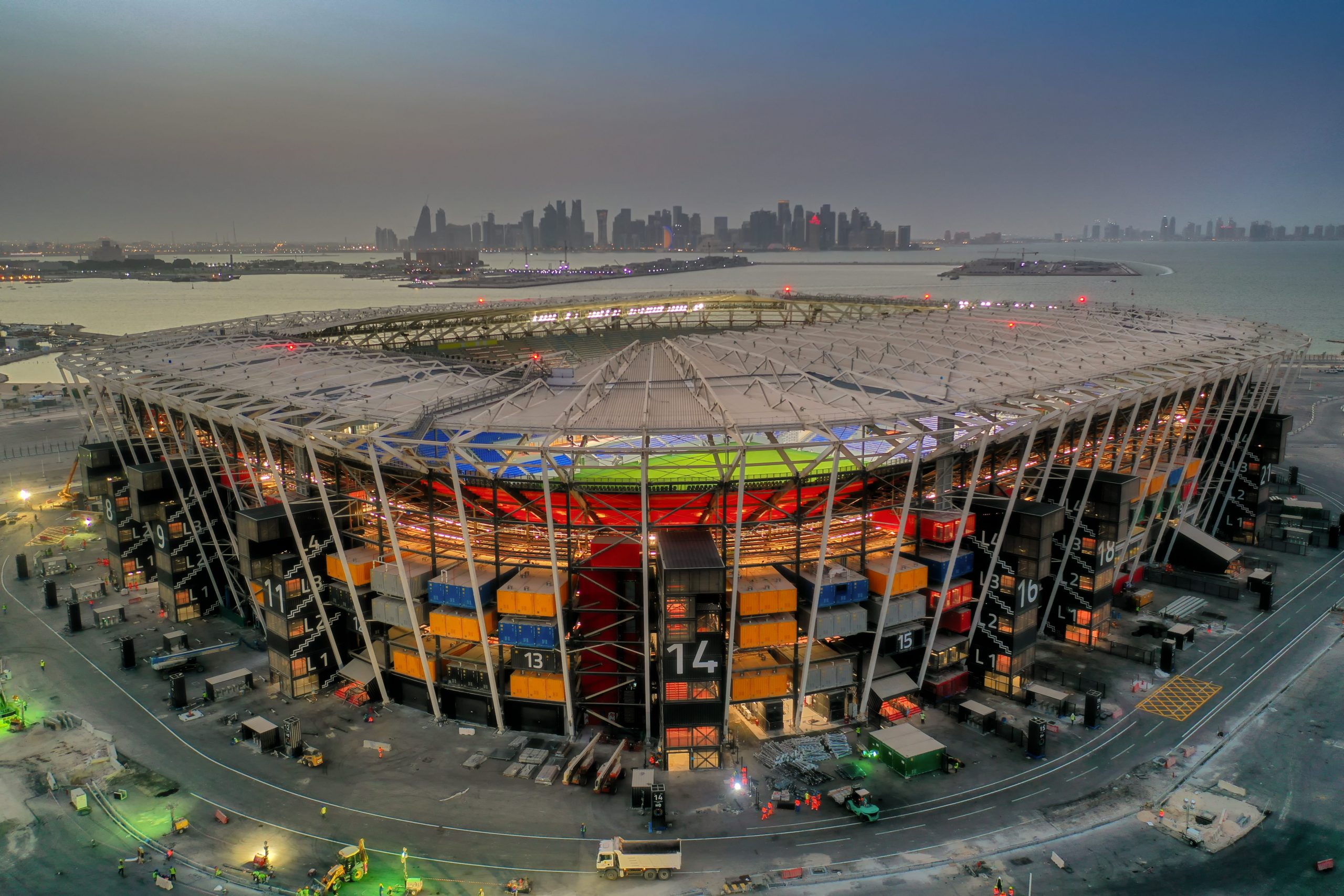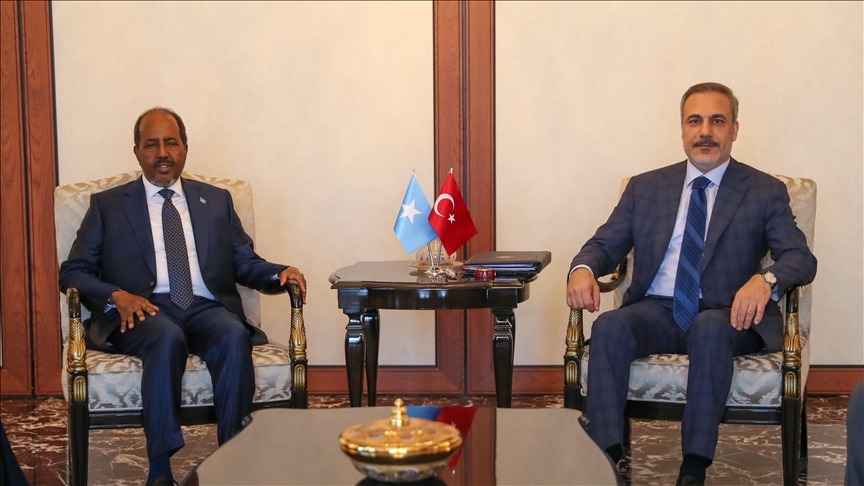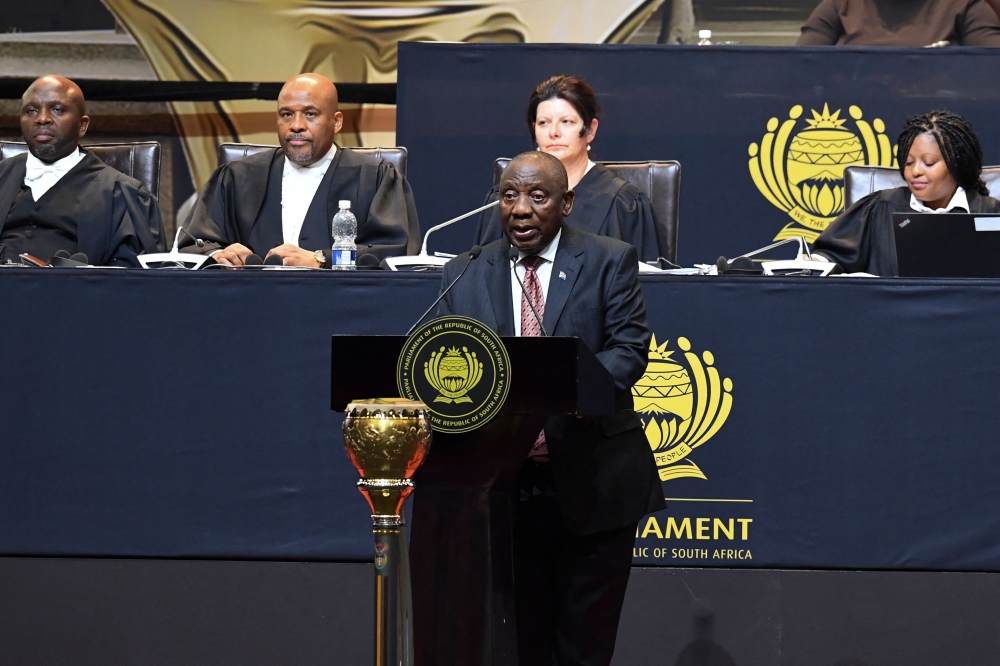Since Qatar was given the hosting rights to the most famous sporting event in the world ten years ago, the Gulf nation has gone above and beyond to ensure that the event would be the most spectacular in history.
Qatar clearly accepted a significant responsibility when given the chance to host the World Cup for the first time in the history of the region. Modern stadiums, easy access to transportation, a lasting legacy, and a complete month of mind-blowing entertainment for all visiting fans are required to host not only a successful tournament but “the best” of all time.
Undoubtedly, it is hard to measure the success of the tournament before its end, but it is safe to speculate based on early indicators by comparing its preparation to other host nations.
Most expensive ever
When it comes to the most expensive World Cup ever, Qatar definitely takes the win. The Gulf nation has accumulated expenses of almost $220 billion for tournament-related projects. In contrast, the $4.3 billion in expenses for the 2006 World Cup in Germany seem almost insignificant.
Brazil’s $13.8 billion expenditure in 2014 set the previous record high, and four years earlier, South Africa had spent just $3.3 billion.

However, it must be taken into account that the costs associated with the new stadiums in Qatar are around $6.5 billion to $10 billion. This is a significant increase on the US$4 billion originally proposed, however, the bulk of the spending is infrastructure costs that are part of the broader Qatar 2030 plan. These include the construction of an innovation centre with hotels, a sophisticated metro network, stadiums, and airports.
So contrary to the criticism Qatar has faced for its exceptional budget, most of the infrastructure built was already in the works for the country’s wider plan— the World Cup has simply accelerated it.
However, the plus side is fans will get to experience brand-new systems, transportation, infrastructure, and technology that will defiantly be a major step up from all previous World Cups.
The value of such an investment, however, will continue to grow in the months and years that follow the World Cup, which is expected to have a lasting impact on tourism.
Sustainability beyond the mega-event
As advertised, sustainability is a major factor for the FIFA World Cup 2022 in Qatar.
All eyes are on the Gulf nation as it promises the first-ever carbon neutral World Cup in history, meaning emissions of carbon dioxide will be balanced or eliminated.
According to organisers, the grand tournament will offer a ‘once in a lifetime’ sustainable experience for all football fans, building “a lasting, sustainable legacy that contributes to the United Nations Sustainable Development Goals and the Qatar National Vision 2030.”
First, all eight stadiums are receiving plaudits for their eco-friendly planning, building, and day-to-day operations. Authorities are also working hard to emit carbon dioxide, while recycling efforts are being put in place to ensure the best ‘green’ outcome possible.
However, doubts have started to appear on whether this green promise will bloom.
After examining grand plans for 64 matches set to take place in November and December this year, climate advocates claim that Qatar’s projected emission plan has been misleading.
Qatar estimates that the World Cup will emit 3.6 megatonnes of carbon dioxide equivalent (MtCO2e). However, the report by Carbon Market Watch accuses authorities of ignoring some major sources of emissions that could contradict its ‘carbon neutral’ claim, and also claim the carbon bonds currently being purchased to offset them lack environmental integrity.
This means that the credits being used to balance the emissions generated from the state-of-the-art projects aren’t doing much to benefit the climate.
While this could disappoint, it’s nothing new. Almost every host country promises the greenest World Cup ever, and then appears to fall short when the final whistle is blown. However, it is safe to say that every host has paved a way for the next one to be better, almost learning from the previous mistakes.
South Africa’s 2010 World Cup, for example, focused on raising awareness of environmental sustainability issues among local and worldwide football fans, providing the groundwork for long-term environmental protection in both national and international football.
Although it did not do well for the country itself, it helped Brazil achieve a more sustainable event.
Brazil’s was supposed to be the “Copa Verde,” a celebration of the greenest World Cup ever. The “Green Cup” instead evolved into a hotbed of social injustice, mainly because its green agenda was largely restricted to the 12 stadiums across the country where the games will be played.
Russia was then criticised heavily for its carbon emission plans. The same year as the tournament kicked off, FIFA had to make two official significant measures to make the World Cup a more sustainable event, including demanding all 12 World Cup stadiums be green certified and pushing carbon emission projects.
Qatar, however, worked on such measures before hand, making it more likely to achieve its goal.
Now, fan experience
Qatar has geared up for plenty of festivals, shows and entertainment options for the millions of fans expected to flock to the country soon.
But what makes Qatar unique is its size – funnily enough.
Thanks to its 11,571 km² size, fans can attend more than one match on the same day for the first time in FIFA World Cup history. All but one of the 12 stadiums in Qatar are within 60 kilometres of one another, making it the “most compact” World Cup in history.
Fans may simply watch their team’s games while staying in a single hotel or other types of lodging. All they have to do to get to and from the venues is use the metro or buses in Doha, which will be free of charge thanks to the Hayya Card.
This is possibly the most stark difference when compared to previous events, in which fans attending the tournament would be forced to book multiple hotels across various cities to follow around games in different areas. This previously meant fans had to cough up extra money for hotels and flights to different cities – both of which are non existent issues in Qatar.
However, in order to have a wider range of lodging options, ticket holders also have the option to stay in any of the neighboring nations, including the UAE, Saudi Arabia, and Oman.
Fans living outside of Qatar’s boundaries can fly in and out of the nation to attend a match because to “shuttle flight” arrangements between countries in the region. All of these flights cost less than QAR 1,000 and depart many times daily.

















Leave a Reply